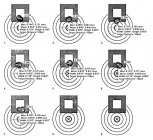Acyr
Gold $$ Contributor
I agree that higher sample rates are usually more valid statistically. However, there are shooters out there that are qualified to shoot small samples and get accurate data. I don't know @Jager qualifications as a shooter but to dismiss his results outright is a mistake.I'm certainly not a statistical expert (I seem to get mistaken for someone else on this specific forum frequently).
Replication is key. If those tests were conducted 10, 20, 100+ times with identical results, that would certainly be a better data set to draw conclusions from. There are certainly limitations to the test however, such as the degree of precision to which the seating depths really are, taking into account any error of the operator and the degree of precision of said calipers, amongst other things. There's also limitations to how the testing is done, specifically from the shooter side - there'll certainly be induced error, which would be impossible to parse out with such small data sets.
And this hypothesis of bullets coming into and out of "nodes" - what is the explanation for that? What is the mechanism that allows that happen? There seems to be a lot of conjecture around what the projectile is doing and what's influencing its behavior. No one is quite able to really explain that. I would love to see some detailed and scientifically conducted tests on this, rather than the observational/anecdotal data of low quality that we always see.
All that said, I would be very interested in seeing this test duplicated many times over, to see if the results repeated themselves consistently.
As far as nodes go it is a simple matter of harmonics. Shoot enough test groups and you will be enlightened.
I learned early on in life that speaking in absolutes only served to make me look uneducated.
You don't know what you don't know.












